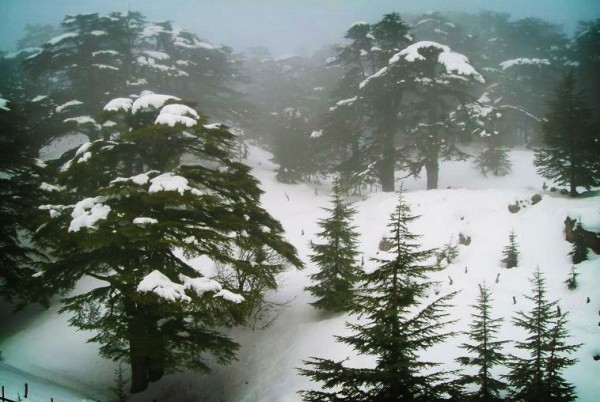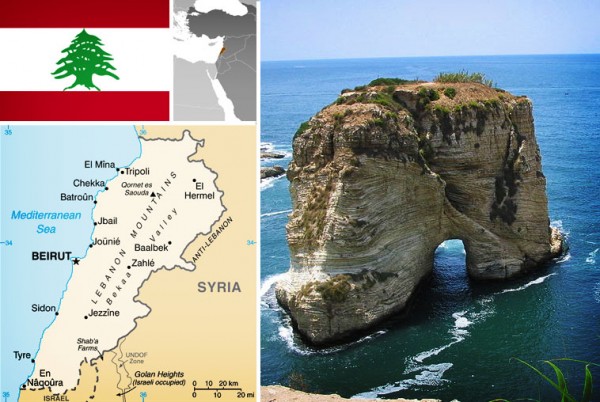Let’s climb around the mountains of Lebanon, shall we? Depending on the time of year, we might find a heavy haze of snow. In the hush and slush we can work up an appetite.
Lebanon’s very name is inspired by her snow-capped mountains – Lebanon literally means white land.
And, even in the humid summers, when the snow has long since melted, the sandy-sandstone still looks white.
Let’s pick our way between needly cedars, crumbly rocks, and thin brush, to our first meal.
Your host will certainly welcome you with a bowl of nuts and, if a baby was recently born, with a cup of hot tea called Ainar served with nuts at the bottom of the teacup [recipe].

Stone of the Pregnant Woman. Photo from the Oregon State University Archives. Ornamental ceiling. Photo by Jerzy Strzelecki. Both images from Baalbek.
After tea, you might be served a mezze – an assortment of little dishes – including tabbouleh or hummus or or kibbeh (a blend of meat and bulgur, served raw or deep fried), baba ghanoush [recipe] or even kababs.

So put on your smile, load up your plate, one item at a time, and get to digging.
There’s just one thing…
If you want to do as the Lebanese do, don’t use silverware and definitely don’t get your hands dirty. Instead, simply scoop everything up with some of the region’s tasty flatbread.
It’s like pita bread, but the size of the moon.
Simply scoop, scoop, scoop the food, just like the buckets of a water wheel (a.k.a. noria).
Take a nap and when you’re hungry again, dig into a real mountain dish called maakroun [recipe] with toum [recipe] – or pasta with lemon and garlic sauce. Or, just possibly, you might want to slurp down some spaghetti with yogurt sauce.
I’m into it.
Are you ready to go? Lebanon is uniquely situated between Africa, Asia, and Europe – and presents an assortment of dishes which blend elements from all of these influences.
What is your favorite food from this region?







3 Comments